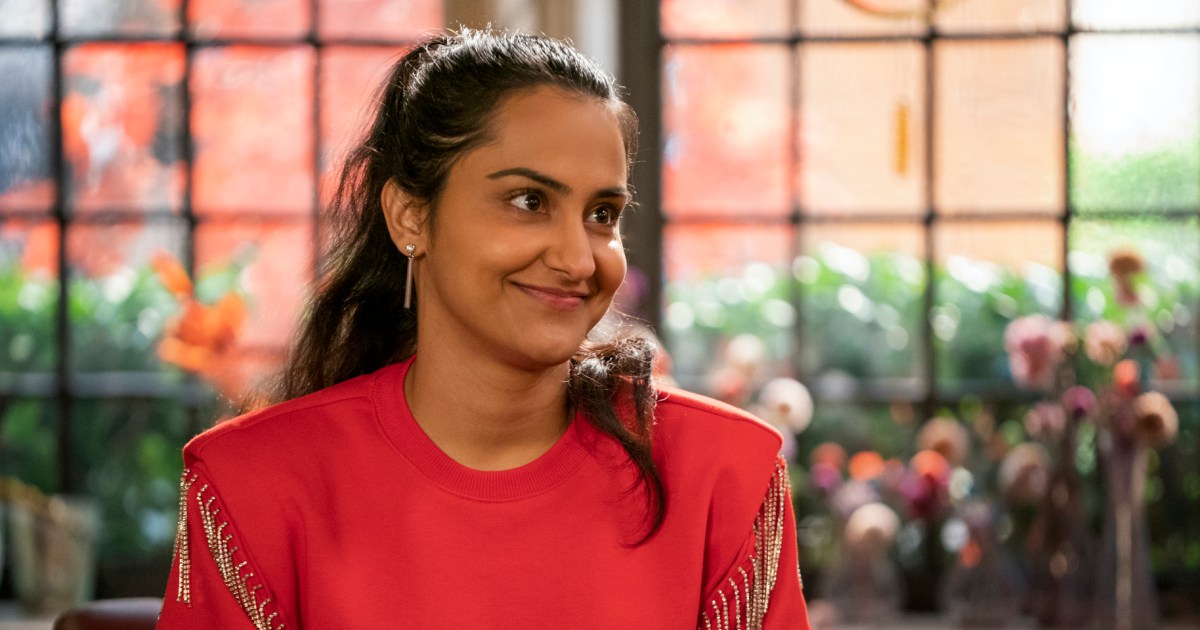
This article contains spoilers for the first two episodes of “The Sex Lives of College Girls.”
Bela Malhotra says goodbye to her parents as they prepare to leave her at the gates of her prestigious Vermont university. She’s reinvented herself in preparation for this moment, shedding the sweaty, awkward “Indian loser” persona she carried through high school.
College Bela (Amrit Kaur) knows what she wants, and she isn’t afraid to go after her two basic desires: to be a comedy writer and to have a lot of sex.
She asks her mom to take her childhood teddy bear away, and kisses it goodbye before entering her new life. “I’m super sex positive,” Bela tells her new roommates, the other main characters of Mindy Kaling’s new HBO show, “The Sex Lives of College Girls.”
Sex has long been either a defining or alienating feature for South Asian women in Western cinema. Colonial era films invented the exotic seductress and the foreign woman in distress, and modern movies and TV shows have ushered in the undesirable nerd, experts say.
But missing even in more inclusive portrayals is a South Asian girl who is purely confident and clear about what she wants, viewers said. With “The Sex Lives of College Girls,” Kaling brought a version of that to life.
“What I really appreciated about Bela was the lack of soul-searching and hand-wringing,” said Harleen Singh, associate professor of women’s studies and South Asian literature at Brandeis University. “She’s unapologetic.”
Confidence doesn’t mean flawlessness, she said, and there’s realness in a character that makes bold mistakes. In the first episode of the series, Bela uses sex to get a highly-coveted position on a comedy magazine. In the process, she unintentionally fools around with someone’s boyfriend and makes enemies of the only two women on the staff.
“We’re all messy,” Singh said. “A messy character is a true reflection of life.” Bela’s nerve is something Trisha Sakhuja-Walia, CEO and co-founder of Brown Girl Magazine, finds refreshing. A “180 degree shift” from other portrayals, Bela simply asks for what she wants. She runs up to strangers to introduce herself and unashamedly tells boys they’re attractive. Her self-assuredness even rubs off on her roommates, whom she drags out of the dorms to party on the weekends.
“I think that Bela is a lot more brave and outgoing than many of us were,” Sakhuja-Walia said. “But I think that almost every brown girl can see a little bit of herself in Bela. Even if they weren’t her, maybe they wanted to be like her.”
Bela is in constant pursuit of new experiences, and Singh says her hypersexuality is portrayed to a bit of an extreme. The show represents sex as novel, not normal, and normalization is a big part of true sex positivity, she said.
“It’s simply the acceptance that sex and sexuality are a part of all our lives,” she said. “I want sex positivity to start with making sex not extraordinary, but ordinary. And in that ordinariness, I think there is something special.”
Sakhuja-Walia, however, sees Bela’s desire to go wild in college as a cultural touchstone. While the character’s Indian background isn’t the center of her college experience, she says South Asian women can pick up on the story behind her motivations.
“I feel like so many brown folks go to college and suddenly have this crazy freedom they’ve never seen before,” she said. “She’s unleashing all this power within herself. I think that almost does tie back to her identity in a very subtle manner.”
South Asians have a complex experience exploring sexuality, Sakhuja-Walia said. And it’s one that’s not often reflected in media. But with a generation of first-generation South Asian Americans becoming adults, characters like Bela might represent a turning point in how communities treat sexuality.
“I’m pretty in awe that we’re making this shift in just one generation,” she said.
Movies and shows in which South Asian characters are normal and desirable are slowly beginning to emerge, but it’s an area in which Hollywood has historically had a problem.
Singh points to movies like “Indiana Jones and the Temple of Doom,” in which the only nonwhite women are oppressed under the violence of evil, monkey-brain-eating Indians, and “the only woman that’s allowed to be beautiful is the white woman.”
In the Harry Potter movies, coy and irritating Parvati and Padma slink in the vicinity of the main characters, hoping to be noticed by them but ultimately being cast aside and ignored.
Kaling’s last project, “Never Have I Ever,” marked a change — an open door for South Asian American main characters, Singh said. The similarities between Bela and Devi (Maitreyi Ramakrishnan) are rooted in their fearlessness. Devi is also a teen unashamed in wanting to have sexual experiences. “She makes her mistakes but she makes them with agency,” Singh said.
While Bela sets herself apart by pushing sexuality to the extreme, there’s complexity to her. Singh calls back to when she kissed her teddy bear at the beginning of the show.
“She can be all of those things,” she said. “You can be naive and tender and delicate and warm and be clearheaded about the fact that you need sex. The absurd allows us to realize that things can be many different ways.”
Source: | This article originally belongs to Nbcnews.com










